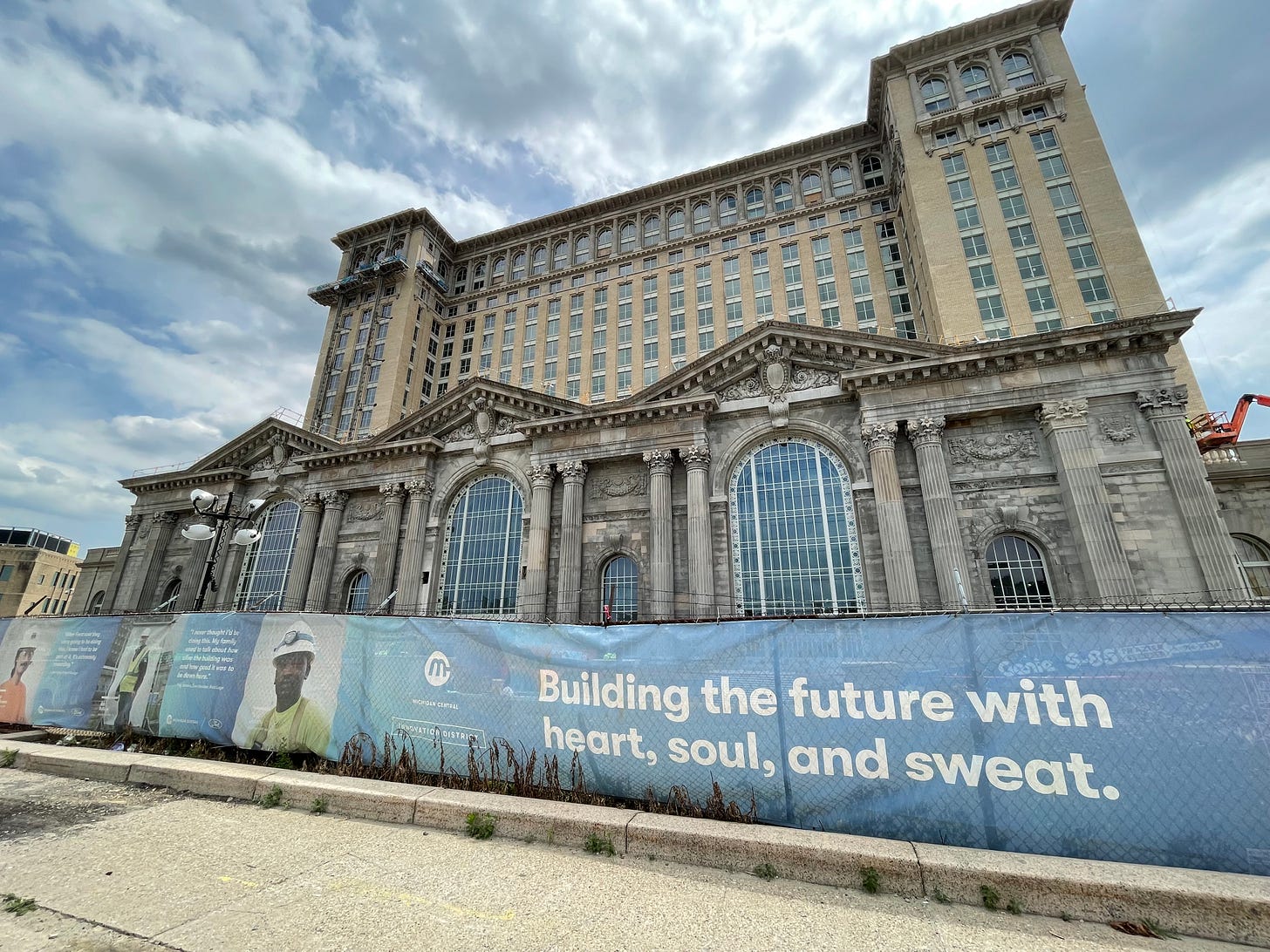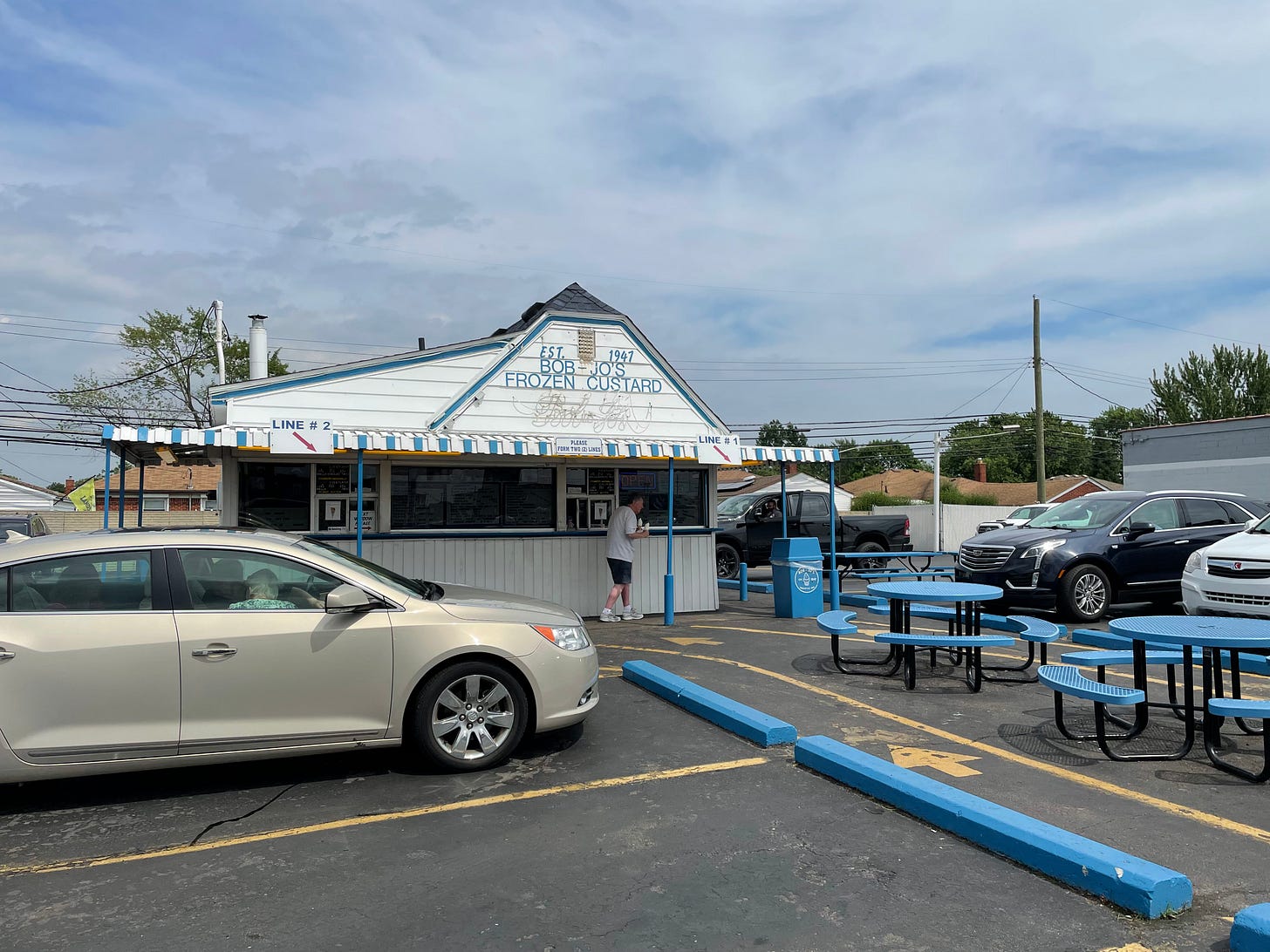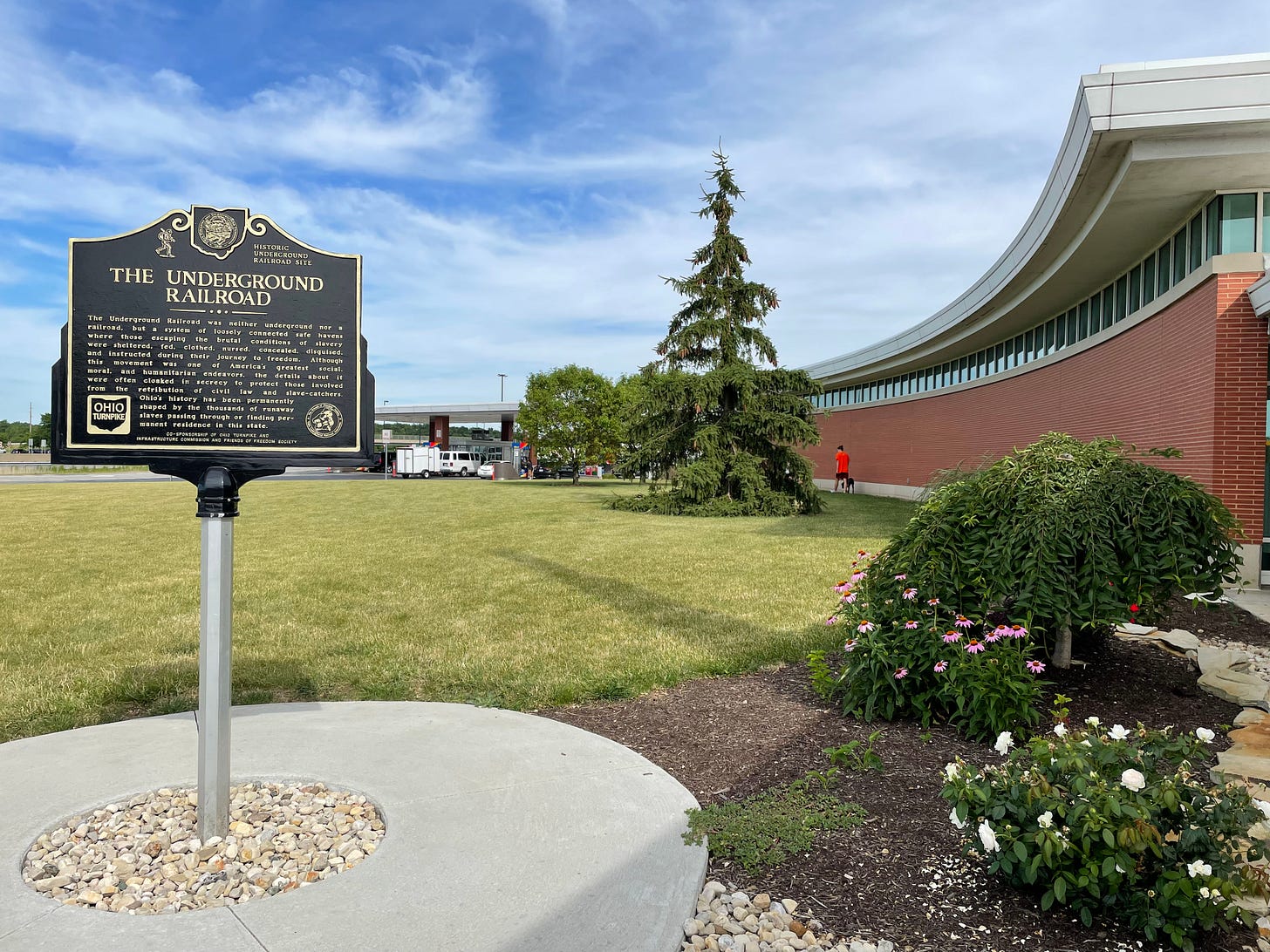Detroit, Part 2
A visit to Michigan Central Station, frozen custard and some bonus reading
In my last post I talked about a visit to Detroit to visit Detroit Venture Partners and Bedrock Group. It was energizing, and inspiring.
Planned meetings that afternoon in Ann Arbor were postponed at the last minute. This left extra time to explore. I lingered in Detroit a little longer, then took a drive through River Rouge, MI (the town, not the factory), and then over to the former Michigan Central Station. During the drive, I did see what I expected to see - stark evidence of the impact of depopulation. Detroit is about 140 sqmi in size. It can fit both San Francisco (49 sqmi) and Boston in its contours, but has a population that may now be below 700,000. So as vibrant and energetic as the urban core felt, elsewhere I saw a lot of evidence of depopulation. This leaves the big challenge of deciding where to invest; where to disinvest; and how to provide connectivity tissue.
In 2018, Ford Motor, headquartered about seven miles away in Dearborn, acquired the long-vacant (but oft-photographed) Michigan Central Station, along with the former Detroit Public Schools books depository. In 2020, Ford announced plans for a 30-acre mobility innovation district, housing 5000 workers, 2500 from Ford and 2500 from partners. I stopped by the historic site.
the former Michigan Central Station and future Michigan Central Mobility Innovation District, as of July 2022.
While I did not go inside the renovation site, this WWJ reporter did in August, for a walking tour with construction manager Richard Bardelli.
What’s evident is the reclamation of an iconic, if long-defunct building really is an attempt to rebuild the neighborhood, and it has to be to take hold. There’s the building, and then there’s the connectivity tissue with the surrounding area. Past efforts to “revive” Detroit - most (in)famously, the Renaissance Center aka the RenCen were buildings, edifices disconnected from neighborhoods, cities inside cities that insulated office workers from their surroundings.
Before heading back to Ohio, I decided to make one more stop, for frozen custard - at Bob Jo’s of Wyandotte. I remembered it from childhood visits to see relatives in the area - we would make the drive, and, if fate smiled, stop for frozen custard. As an audible after a cancelled meeting, it wasn’t a bad one. Shortly after my visit, Bob Jo’s celebrated its 75th anniversary.
Bob Jo’s of Wyandotte. In business since 1947.
Then, after crossing back into Ohio, this discovery - that the Commodore Perry rest stop on the Ohio Turnpike had been a stop on the Underground Railroad. These signs were added in 2020.
Other notes:
I took a number of voice memos during the drive up I-75 from northern Ohio to Detroit. One observed the preponderance of weed ads on billboards once I had crossed the state border - it turns out Michigan legalized cannabis in 2018, becoming the tenth US state to do so for adults 21 and over. The billboards had not been as noticeable during my last visit to the state, in 2019.
The People Mover, an overhead light rail, passed by during my visit to Detroit Venture Partners. To this Bay Area resident, the sound and vibe were similar to, say, the airport rail at San Francisco Airport. It recently re-opened after a 2-year pandemic hiatus.
I recently (after my trip to Detroit, alas) read Michelle Wilde Anderson’s The Fight to Save the Town (thanks to a recommendation from James Fallows), which highlights turnaround efforts in four locations struggling with diminishing tax bases and the inability to deliver public services, including Stockton, California, and Detroit. It’s riveting reading and I recommend it.




